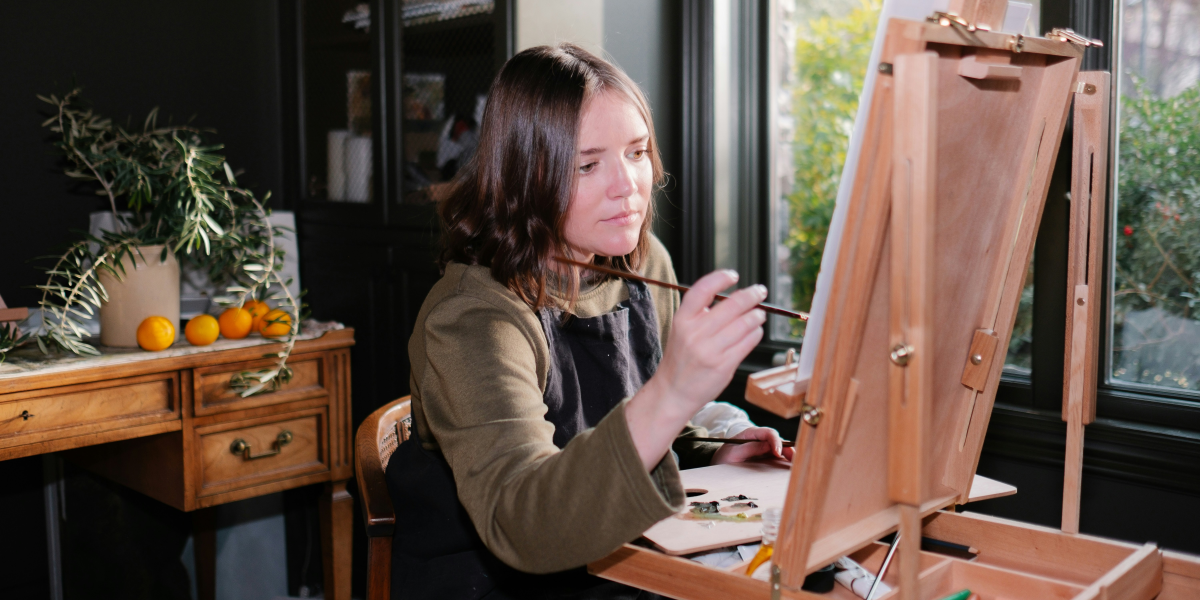The journey of an artist involves far more than talent or inspiration. The creative process is a complex, personal journey that shapes each artist’s unique style and vision. From the initial spark of an idea to the completion of a work, artists undergo a process of exploration, experimentation, and refinement.
The Spark of Inspiration
Every artistic journey begins with inspiration. Artists draw ideas from various sources, including nature, personal experiences, social issues, and other art forms. Inspiration often strikes unexpectedly, but artists learn to seek out experiences and environments that spark creativity.
Finding Sources of Inspiration
For many artists, inspiration comes from observing the world, connecting with people, or responding to emotional events. Others find inspiration in art, using techniques from past artists or merging styles to create something new. By exploring diverse influences, artists can find unique sources of motivation that fuel their work.
The Exploration and Experimentation Phase
Once inspired, artists experiment, testing ideas, materials, and techniques. This phase explores possibilities and refining ideas until they align with the artist’s vision.
Experimenting with Techniques and Mediums
Artists use this phase to explore various techniques, from painting and sculpture to digital tools. This experimentation allows them to discover the materials and methods that best express their vision. Trying new tools and techniques often leads to breakthroughs, helping artists find distinctive ways to convey their message or concept.
Embracing Trial and Error
Creativity often involves trial and error, where artists create and discard ideas that don’t align with their vision. This process requires patience and resilience, as not every experiment succeeds. However, each attempt adds to the artist’s experience, helping them understand what works and what doesn’t, ultimately leading to refined and meaningful work.
Developing a Personal Style
As artists grow, they develop a unique style that reflects their personality, influences, and creative choices. This phase is a turning point where artists solidify their voice and identity within their craft.
Defining a Unique Voice
An artist’s style emerges by selecting techniques, themes, and visual elements that resonate with them. This style often evolves as they refine their work, gaining clarity on what defines them as an artist. A distinct style sets an artist apart, creating a recognizable signature that audiences can connect with.
Building Consistency
Consistency is key to establishing a strong artistic identity. Artists build a body of work and develop a coherent approach to their themes, colors, and techniques. This consistency strengthens their presence in art, making their work more recognizable and helping audiences understand their perspective.
Overcoming Creative Blocks
Artists often encounter creative blocks during the process. These periods can be frustrating, but they also offer valuable opportunities for growth and introspection. Artists use various techniques to overcome these blocks, learning to manage them as a natural part of the creative journey.
Techniques for Breaking Through Blocks
Artists may take breaks, revisit old works, or experiment with new mediums when facing a creative block. Some artists use creative exercises, like sketching or brainstorming, to stimulate ideas. By approaching the block from different angles, artists can reignite their creativity and find fresh perspectives.
The Value of Patience and Persistence
Creative blocks can be challenging, but they also teach patience and resilience. Artists learn that overcoming these obstacles is part of the process and often leads to growth. By persevering through difficult periods, artists strengthen their commitment to their work and emerge with a renewed sense of purpose.
Bringing the Vision to Life: The Final Phase
The final phase of the creative process involves translating an artist’s vision into a finished work. This stage requires focus, technical skill, and attention to detail as the artist refines their piece to achieve the desired outcome.
Fine-Tuning and Polishing the Work
In this phase, artists refine their work by adjusting details, experimenting with colors, and ensuring the piece aligns with their vision. This stage can be meticulous, as small adjustments often make a significant difference in the finished piece. Fine-tuning allows artists to bring their ideas to life in the most impactful way possible.
Sharing the Finished Piece with the World
Once the work is complete, artists often share it with an audience through galleries, online platforms, or social media. Sharing completed pieces allows artists to receive feedback, connect with their audience, and gain recognition for their efforts. For many, sharing is the most fulfilling part of the creative process, as it brings their work to life in a new way.
The Creative Process: How Artists Discover and Share Their Unique Vision
The creative process is a journey of exploration and growth. Artists develop unique styles that reflect their vision by finding inspiration, embracing curiosity, and facing challenges. Though challenging, this journey offers rewarding moments of self-expression and connection. For artists, creating art is also about self-discovery and sharing their unique perspective with the world.
Published by: Khy Talara















